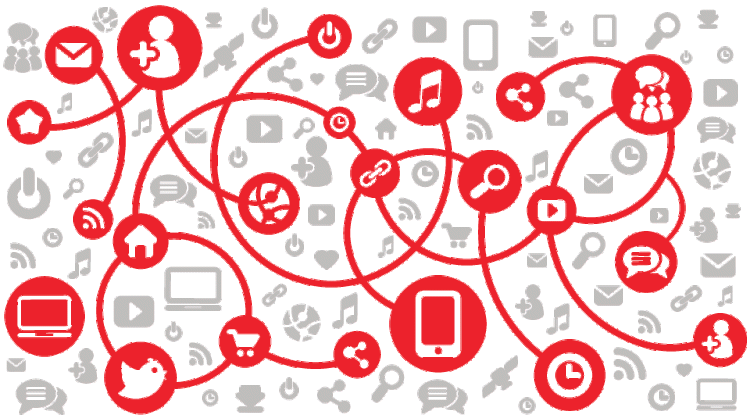Customer touch-points are multiplying, and so are engagement technologies. Join leaders in marketing as they discuss how to adopt an effective omnichannel strategy that unifies the customer experience.
Customers have grown to expect an extremely high degree of relevance in the ways you communicate with them as a marketer. While, for planning purposes, it’s sometimes useful to think in terms of ‘which marketing channel will I add or subtract budget to this quarter’ — we’d like to firmly untrain that corporate ethos. That’s right — forget channels! Your customers do not think, live, or shop in channels.
To get a sense of where marketers now want to get to (hugely relevant, personalized, right time, right place, right offer communication), it’s important to get a sense of where we’ve come from. In the early days, web measurement was simple. Technology was built to understand the volume of activity on websites (simple usage and log data from web server logs). Direct mail budgets were a big, thriving thing.
Through the 2000’s, marketers started engaging more and more with multiple channels (search and email, especially). Sources of traffic became especially important — Google Analytics launched, and became (and still is) the de facto solution for measuring aggregate web visitor data, content usage, basic web behaviors (e.g., conversions), sources of traffic, etc.
This is represented in the “digital analytics” stage below. If you’ve ever sent out a screen grab of your Google Analytics dashboard as “report,” you’re in this stage. It’s perhaps most difficult to transition to the next stage, as it requires far more skills and resources.

The platforms for capturing customer data continue on a meteoric rise due to the proliferation of marketing channels and devices. The ad marketplace is more competitive and confusing than ever. Budgets are shifting to the CMO to take advantage of this opportunity — but those who can’t manage the data will simply be taken advantage of. The mobile commerce revolution has made the stepchild of marketing departments of a few years ago (the mobile team) its most prized possession. But the ‘omnichannel’ strategy falls short without understanding all the components that go into it.
To be truly omnichannel means to account for users, platforms, and devices. This is really challenging data to collect, and crucial to defining that “source of the truth” that powers omnichannel marketing. At a bare minimum, you need:
- As much conversion reporting as you can get and a central repository for customer data (CRM) — This is easy for areas like ecommerce, and really challenging for areas like social media.
- Web Analytics — Google Analytics is the market leader, but depending on your specific needs, there are literally dozens of other established vendors here, with in-page activity and personalization tools rapidly emerging.
- Platform based analytics (e.g. Facebook Insights, mobile app analytics, video analytics) — These evolve and change quickly so it’s difficult for third parties to keep up with all of the metrics available to you directly from platforms themselves.
- Customer analytics with segmentation, attribution, and predictive modeling — These capabilities help you better understand how customers behave when interacting with your products and services.
- Targeting, testing, and personalization — this could be experience management tools (site, asset, form management, a/b testing) or identity and tag managers.
- Campaign management/customer journey tools — To better rationalize activity across channels and touchpoints.
- 3rd-party brand analysis/monitoring — This technology helps monitor overall conversation around topics, especially cross-platform.
- Media optimization — This means paid display reporting in as unified a view as possible (there’s massive fragmentation in this market). The rise of programmatic advertising has bred better data sources and better measurement across different networks. You’ll also need Paid Search reporting, which would often come under a different platform.
The use cases, statistical methods, and tactics contained within each of those ‘channels’ are vast, and often augment one another. Mastering them brings you one step closer to a true state of customer intelligence.
Now is the time to master the omnichannel challenge — and in this webinar we’ll look at the trends that winning companies are capitalizing on and the solutions necessary to create a seamless omnichannel customer experience — whether you’re mobile first, mobile only, or mobile-sometimes.
Don’t miss out!
In this webinar you’ll:
- Learn why today’s mobile marketing automation solutions fall short of customer expectations
- Craft winning omnichannel marketing strategies balance mobile push notifications, in-app messages, email, and social communications
- Understand users on a personal level, and not device level, and why that is critical in mobile
- Prepare for the transition from “Mobile Marketing” to “Communicating” in your organization — and beyond
Speakers:
Mark Josephson, CEO, Bit.Ly
Sean Blankenship, CMO, Coldwell Banker
Heather Marie, CEO, Shoppable
Stewart Rogers, director of marketing technology, VentureBeat
Moderator:
Wendy Schuchart, analyst, VentureBeat

